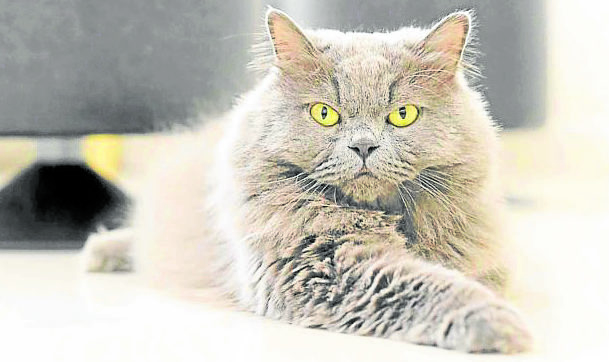
Cats have been around since 4,400 BC and it’s interesting how they have evolved being around humans. Pardon, cat parents, but cats are believed to have been attracted to humans because of the presence of rats in their household.
Unlike dogs, which are omnivores, cats are obligate carnivores (meaning, they get their proteins from meat). They need taurine, vitamins A and B12. Deficiency of these important nutrients is detrimental to a cat’s health. Without a steady supply of these nutrients, they could develop liver and heart problems. The ancient cat’s ideal diet was made up of mainly proteins and fats from small prey like rodents, rabbits and such. So what changed?
In my previous article (“Kibbles are to dogs what fast food is to humans,” Sept. 16), I discussed how important it is to study a species’ nature. Understanding animals’ nature enables us to determine what they need.
Since cats need higher protein requirement, you may try the mixing boneless chicken meat with liver and gizzard, or boneless chicken with liver and heart.
Eggs are an important contribution to the fatty acid profile of your cats. If you are concerned about bacteria in egg, you may cook it. It may come as a surprise but cats don’t need dietary carbohydrate. Compared to dogs, cats have low levels of enzymes that can break down carbohydrates. That means carbohydrates from rice and corn are not necessary in your feline’s diet.
As a responsible pet owner, you have an obligation to your cat to meet its needs as an obligate carnivore. Convenience of feeding, availability and storage should not be a primary option in choosing how to feed your feline friend.
Essentials
The following are essential to your cat’s diet: protein from meat or fish; fatty acids (internal organs are great sources); vitamins and minerals.
Raw feeding should be your gold standard in feeding your cat. Inflammatory bowel disease and diabetes are just two of the most common diseases that can be caused by artificial cat food. It is also common knowledge that feeding commercial pet food poses a higher risk of blocked cats (in males, where the presence of stones impedes proper urination).
Though raw feeding needs quality control and has higher risk of bacterial contamination, if done right, you’re rewarded with a cat with healthy physique. You can also count on fewer vet visits.
Raw feeding is complicated and you’ll need guidance from your vet. Find the right vet who can address your questions when you are ready to make that big switch. Preparing and sourcing fresh food can be time consuming. A great concern is bacterial contamination that may affect both you and your cat. But with proper handling and a good reputable meat source, it should work out fine.
Some points to consider on how much you need to feed your cats: Different breeds and types of cats may have different metabolisms. Young and mature cats of the same size may eat different amounts. But as long as body conditions are normal, it should not matter. The first five months are the most crucial period for your cat’s development. Be ready to lessen or add amount of food needed.
Weight loss
Raw feeding does wonders for obese cats. Many of us love seeing overweight and fluffy cats, but that sort of cuteness can be deadly.
Remember that the amount of food we give to our cats should be appropriate for their “lifestyle.” Cats are not meant to be caged.
If you are switching from commercial food to fresh raw food, it is normal to see a significant weight loss in your cat; meaning, there is so much in those nice commercial cat food packaging that your pet doesn’t need. The weight loss could mean that your cat’s body is releasing the retained water due to the inflammatory effects of a grain-based commercial diet.
Some cats may resist fresh meat in the beginning, because they can’t resist salty and fatty food. Pet food manufacturers advise us to feed only one type of food. But you may start by feeding a little bit of fresh food mixed with kibbles. If all is good, gradually increase the amount of the fresh food until you are feeding only meat.
I have laid down the most important factors to consider in giving fresh and raw food for your cats. Now let me give you a few disadvantages of kibbles.
• Low moisture content due to the manner of how it is packed. (Mouse is 70 percent moisture.)
• High in carbohydrates, which your cat does not need.
• Poor protein source since most are plant-derived because they’re cheaper that way. Animal protein source might also be compromised, since most are from beaks, nails and things we don’t want to know.
• And, most importantly, kibbles can be contaminated with molds or mycotoxins (remember, kibbles are high in carbohydrates that are sourced from grains). Long-term kidney damage may result form mycotoxin ingestion.
We love our cats, so why not give them the best? —CONTRIBUTED INQ
The author is the veterinarian-founder of Philippine Pet Birth Control Center Foundation Inc.














































